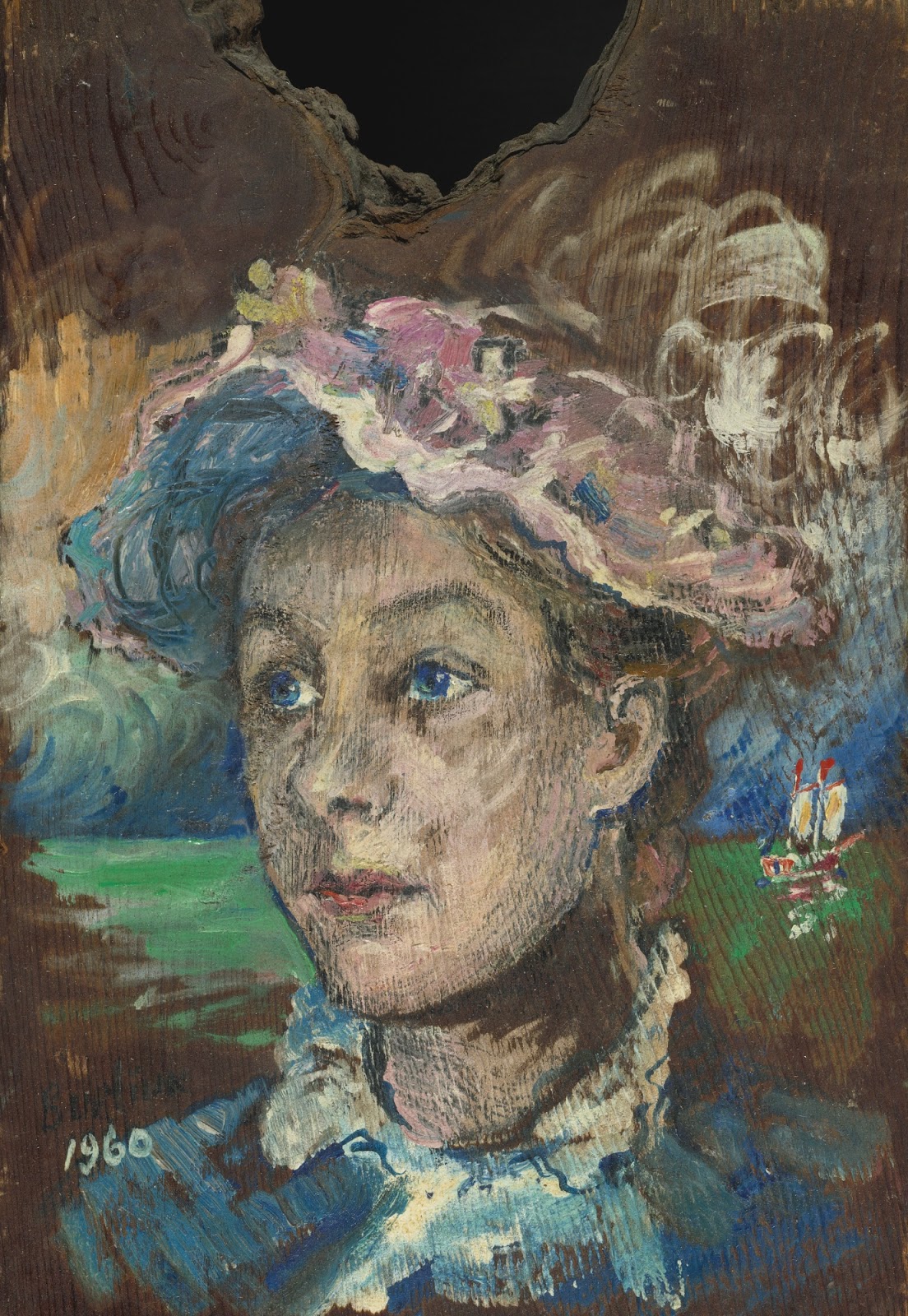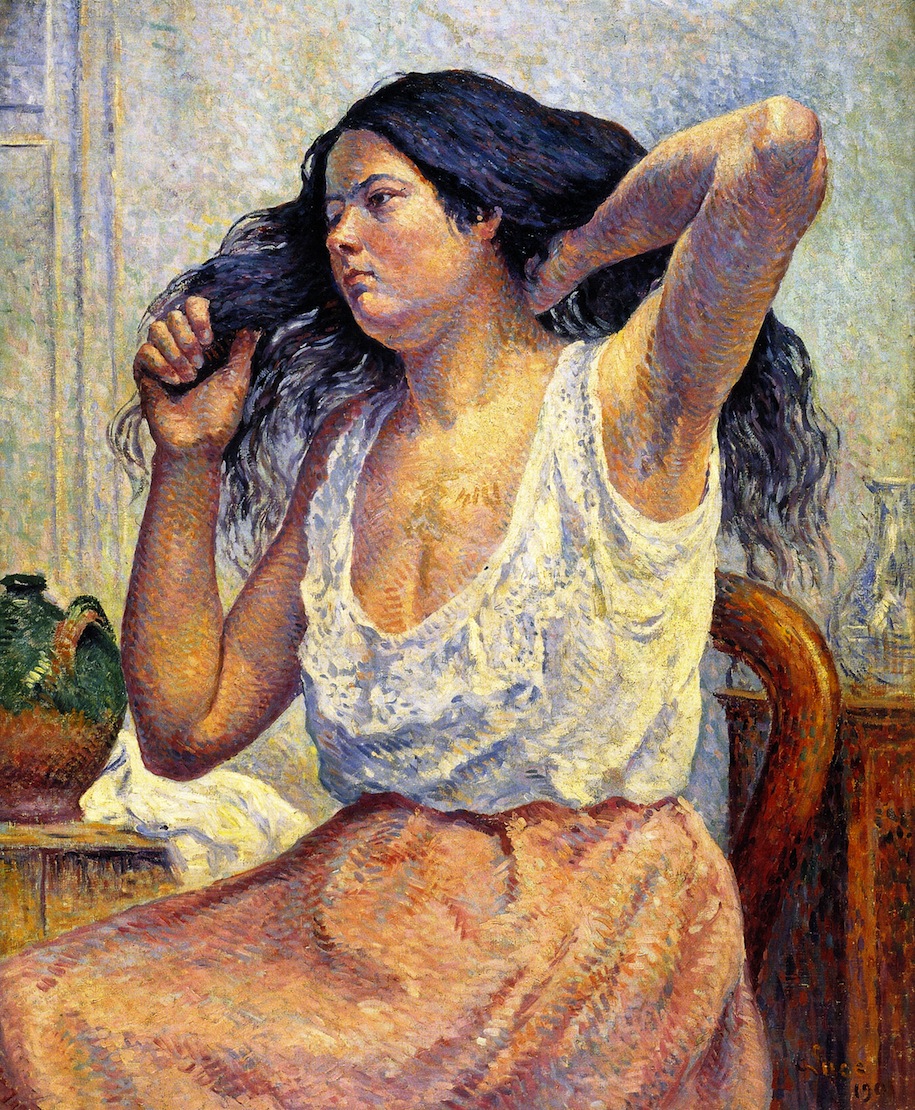Hubert Sattler (21 January 1817 - 3 April 1904) worked under pseudonyms Louis Ritchard, E Grossen and Stähly-Rychen, was an Austrian landscape painter.
Hubert Sattler was born in Salzburg. His father, Johann Michael Sattler, was also a landscape painter and created the Sattler Panorama of Salzburg in 1825-29. Hubert donated it and more than 300 of his own works to the city in 1870; the panorama is on permanent display in the Panorama Museum inside the Salzburg Museum, together with a rotating exhibit drawn from approximately 150 of Herbert's cosmoramas held by the museum.

Hubert Sattler | Landscape painter

Guillermo Gómez Gil | Seascape painter
Guillermo Gómez Gil [1862-1942] was born in Malaga in 1862. He showed an interest in art from a very early age and began training as an artist in 1878 as a pupil of the San Telmo School of Fine Arts in Malaga. He must have made good progress as he ventured to compete for the Barroso prize awarded by the council as an incentive to students of the school, although he did not win. He tried again in 1881 and was equally unsuccessful.
In 1880 he took part in his first group show, the Art, Industrial and Agricultural Exhibition organised by Malaga council. The works he entered attest to his preference for seascapes as they were entitled Puesta de sol (“Sunset”) and Marina (“Seascape”); the former was acquired by the council for 375 pesetas.

Charles Hoffbauer | Cityscape painter
Charles Constantin Joesph Hoffbauer (June 28, 1875 - July 26, 1957) was a French-born artist who became a United States citizen. He painted a wide variety of subjects, including many that depicted scenes of historical interest.
Charles Hoffbauer was born in Paris.
His parents, Féodor Hubert Hoffbauer and Marie Clemence Belloc Hoffbauer, were of Alsatian origin. Féodor Hoffbauer was a well-known archeologist, architect and artist, and likely influenced his son's interest in history.
As a child, Charles sometimes assisted his father in conducting research.
The elder Hoffbauer's 1882 book on Paris architecture, Paris à Travers les Ages, has been updated over the years and remains in print with the latest edition published in 2007.

David Burliuk | The Father of Russian Futurism
David Davidovich Burlyuk, Burlyuk also spelled Burliuk /Дави́д Дави́дович Бурлю́к (1882-1967), Russian poet, painter, critic, and publisher who became the centre of the Russian Futurist movement, even though his output in the fields of poetry and painting was smaller than that of his peers. Burlyuk excelled at discovering talent and was one of the first to publish the poetry of Velimir Khlebnikov and to recognize Vladimir Mayakovsky’s brilliance.
It was largely because of Burlyuk’s efforts that the Russian avant-garde became known in Europe and the United States.

Maximilien Luce | Neo-impressionist painter
Maximilien Luce (1858-1941) was born in Paris to an artisan’s family.
He worked as a printmaker in his early years then, around 1880, devoted his career to painting.
Camille Pissarro, who shared his anarchist convictions, introduced him to the Neo-Impressionist group in 1887.

Ernesto Garcia Pena, 1949 | Abstract painter
Painter, drawer and engraver, Ernesto Garcia Peña has a natural tendency towards fantasy and hedonism, where he ingrains his artworks with a perceptible chromatic gradation of musical notes to express his feelings and emotions towards sensual subjects.
The fine drawing, the explosion of greens and blues, the delicate transparencies, all bestow a voluptuous sensuality to his obsessive search for beauty.
Plant motifs, with an evanescent lightness, create a dreamlike atmosphere that the artist controls at will to tone down or emphasize the eroticism of his enigmatic women or the mating of his levitating couples.
He studied art at the Instituto Superior de Arte. His paintings are part of the collection of Museo Nacional de Bellas Artes, Cuba, Museo de Arte Memorial América Latina, Brasil, Museo de Arte Moderno Miskolc, Hungría and Museo de Arte de Las Américas, Nicaragua.

Charles Warren Eaton | Tonalist landscapes painter
Charles Warren Eaton (1857-1937) was an American artist best known for his Tonalist landscapes. He earned the nickname "The pine tree painter" for his numerous depictions of Eastern White Pine trees.
Eaton's entrance into the art world coincided with a profound change in the prevailing artistic style in America. In the late 1870s the highly realistic and detailed Hudson River School manner, which had dominated the American art scene for over forty years, was giving way to a much looser, moodier style that younger artists were bringing home from Europe. This new style, which would later come to be known as Tonalism, emphasized low-key colors and tended to depict intimate settings rather than scenes of grandeur. Eaton adopted this new style in New York and became friends with two other Tonalist artists, Leonard Ochtman and Ben Foster.

Walter Sickert | The Camden Town Group
Unlike the majority of the Camden Town Group (Group of British Post-Impressionist artists active 1911-1913) - Walter Richard Sickert (1860-1942) was recognised during his own lifetime as an important artist, and in the years since his death has increasingly gained a reputation as one of the most influential figures in twentieth-century British art.
He was universally acknowledged throughout his life as a colourful, charming and fascinating character, a catalyst for progress and modernity, yet someone who remained independent of groups, cliques and categories.
Iscriviti a:
Post (Atom)


